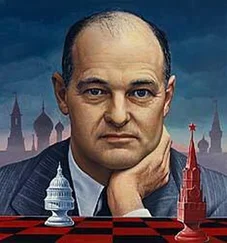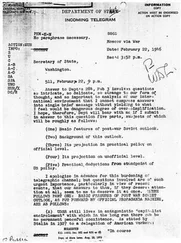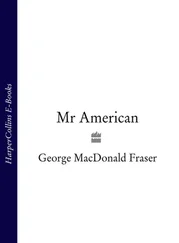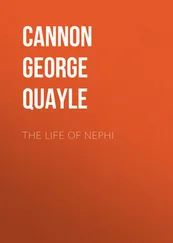George did seem shy, though, so on one visit Frances and her roommates brought home a girl they thought he would like. “I think they expected more to happen than did because I wasn’t prepared to go to these lengths yet.” Sensing that he had disappointed, “I wrote her afterwards a passionate love letter and she wrote me very sensibly back and said that that wasn’t the way it was.” He did, however, fall in love with New York. “I thought it was absolutely marvelous.” 11
George did not recall being depressed at Princeton, but he was indeed shy, and if anybody did talk to him, he tended to talk too much: “I think many Middle Western boys had this experience when they went East to college.” There weren’t many at Princeton in the 1920s: the university drew its students chiefly from wealthy families and elite prep schools on the East Coast. There were no women, no blacks, few Jews, and—somewhat surprisingly for an institution strongly shaped by its former president Woodrow Wilson—few foreigners. The emphasis in admissions was on “homogeneity,” but that did not mean democracy: Princeton was as class-ridden as the society from which most of its students came. 12
“[I]f you were from some place that you didn’t think was ‘the’ place to be from,” a friend recalled many years later, “you felt like a hick. You didn’t think your clothes were right, and you didn’t think what you said was right, and you didn’t know the right people, and you held back in a corner and tried to hide all that part of yourself.” George himself, half a century later, remembered asking a fellow freshman at the first student assembly what time it was. The young dandy took a puff on his cigarette, blew some smoke, and then walked away, searing himself into George’s consciousness: “I was just proud enough not to suck up to those boys. And wouldn’t have known how to do it anyway.” 13
For this reason, getting into Princeton was not nearly as difficult as fitting into Princeton once he was there. During his first year, of course, all freshmen were inferiors. They wore beanies (“dinks”) and were banned from walking on certain sidewalks or patches of grass. The class stood disgraced if one or more of its members did not, at some point during the year, steal the bell-clapper from atop Nassau Hall. They expected to be photographed in front of Whig Hall while sophomores pelted them from above with unpleasant substances. This form of class consciousness was good-natured enough, though, and when George got to be a sophomore, he himself harassed freshmen. “We certainly did those boys up right,” he wrote Jeanette, “with water, flour, eggs, tomatoes, fish, green paint, cement, alabaster, and every other conceivable concoction.” 14
There was, however, a more complex consciousness of class at Princeton, to which George alluded early in his sophomore year. “Last Sunday I was [at a] dinner in Trenton…. The other Princeton boy down there was a man who plays varsity football, is on the senior council, and belongs to Ivy, so you can see the eliteness.” 15“Ivy” was the Ivy Club, and George’s boast reflected multiple meanings of the word class . It referred not only to individual courses, or to the collective experience of a common graduating year; it also signified membership—or lack of it—in Princeton’s distinctive eating clubs, and that for many of its undergraduates was the most important thing of all.
Princeton had abolished fraternities in 1875 but neglected to replace them with adequate dining facilities for upperclassmen. This encouraged the construction and generous endowment of privately owned clubs, mostly along Prospect Avenue, which offered elegant dining, ample drink, and opulent facilities for parties, dances, and alumni reunions. Admission was by the vote of the members, and with few other places to socialize on campus, getting into a club became the prevailing preoccupation from the moment freshmen arrived. Since not all clubs were equal in prestige, joining the “right” one was at least as vital. Everything depended on “bicker,” the critical spring week when sophomores waited anxiously for the all-important knock on the door that would tell them they had made it in—which is to say, that they had been deemed to have fit in. It all amounted, one professor later complained, to “a religious frenzy over the choice of a restaurant.” 16
By the time his own bicker week rolled around, George had decided that the process was beneath him: “In a veritable transport of false pride, self-pity, and thirst for martyrdom, I absented myself every afternoon from the campus, lest somebody ask me to join a club.” In the end, though, somebody did. Bill Oliver, whose sister had roomed with Constance at Vassar, sought George out: “You’re making a great mistake. This is going to damage your upper-class years—you’ll be happier if you join.” Moved that anyone had taken the trouble, he accepted membership in Key and Seal, which he described to Jeanette as “neither the best nor the worst” but “the wildest club in Princeton.” He then took a job as assistant manager there to cover the costs. 17
Even in his own club, though, George was uncomfortable. Its chief vice was drinking, but “since I don’t like to drink, I’m not in fear of temptation on that score.” He later acknowledged not having many friends in Key and Seal. By the end of his junior year, he was brooding about the “super-sensitiveness” that had led some of his classmates to “make social prestige during undergraduate years the sole aim of life.” So he resigned when he returned to campus. 18
He thereby saved, George wrote his father, $300. But it had been “no small sacrifice,” because “[a] non-club man is quite generally snubbed and looked down upon, takes a very small part in college life, and misses out on practically all of the things that men have in mind when they talk about ‘the grand old college days.’” For the rest of his senior year there was no choice but to eat with the “rejects,” the students who had gotten into no club, and that, George later recalled, was terrible. Each of them “was afraid that the fellow next to him would think that he couldn’t take it and was trying to butter him up to make friends, so we usually ate in a sort of proud silence.” 19
George drew from this unhappy experience the lesson that “one had to make one’s own standards, one could not just accept those of other people; there was always the possibility that those others, in the very rejection of us, had been wrong.” But it had been he who had rejected his fellow club members, not the other way around. George captured his own contradictions in a letter to Jeanette: “My hardest job is to be conventional, for that is something which self-respect and blood often tell [me] not to do,” even though “I believe [conventionality] brought me to Princeton.” 20
“There was… a curious strain of weakness running crosswise through his makeup,” it was once said of another student who wound up at Princeton. “[A] harsh word from the lips of an older boy… was liable to sweep him off his poise into surly sensitiveness, or timid stupidity…. [H]e was a slave to his own moods.” 21That student was Fitzgerald’s Amory Blaine before he entered Princeton: he eventually got over it. George, for whatever reason, never quite did.
Academics, fortunately, came more easily than social life. George’s most challenging freshman course was Historical Introduction (known to the students as “hysterical interruption”), which sought to show the effects of climate, geography, and resources on civilizations. The professor was the young Joseph C. Green, “a stern, vigorous, and relentlessly conscientious scholar, placing no demands on us that he did not meet to the fullest degree himself.” Young George had this course in mind when he wrote his father that “my future rests chiefly on how much studying I do in the next week and a half.” But he passed everything—no small achievement given his bout with scarlet fever—although he did have to repeat freshman English literature in his sophomore year. 22
Читать дальше












